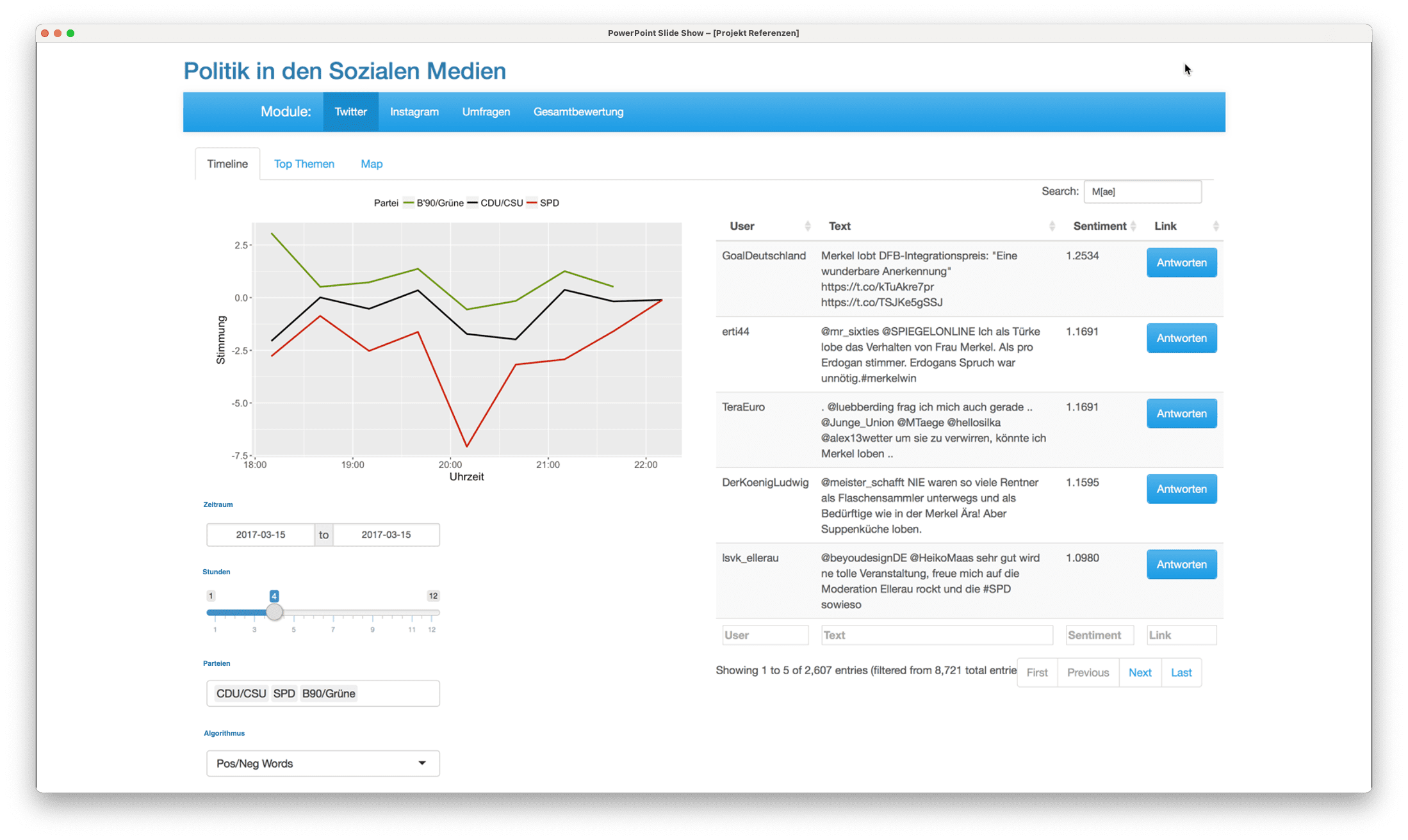Sentiment analysis is the automated process of analyzing data to determine the sentiment expressed (positive, negative, or neutral) regardless of the format, text video, images, or speech. Some popular sentiment analysis applications include social media monitoring, customer support management, gauging brand reputation, and analyzing customer feedback.
The process to extract contextual insights is similar regardless of whether we are looking to derive business intelligence from an ML sentiment analysis algorithm or predict the likelihood of a client leaving and why. Understanding the data available, what it can tell us related to a defined business challenge(s), and specific objective(s) requires a data strategy that sets the foundations for a company to become insight-driven.
Challenge
Analysis of social media for the federal election. Understanding and gauging the sentiment and mood of the public through social media to help manage public perception through impactful communication.
Solution
The developed application analyzes the sentiment of posts in social networks for the federal election that had a political reference, i.e. whose content was a politician, a party, a political topic, or a re-post or response to a post of a party or political person. The posts were collected in the period 08/2016 to 10/2017 and analyzed in real-time for their sentiment value (sentiment). Different algorithms for sentiment determination as well as time period and update interval could be chosen. In addition to the sentiment value, the most discussed topics, as well as the most positive and most negative posts, were also shown. These posts could be responded to directly via an interface. In addition, the application enabled the mapping of posts and their content on a map.
Outcome
The application enables parties and political actors to analyze the mood in social media and interact directly with relevant actors regardless of whether they follow you or not, leading to more effective and precise public communication management and perception.
The Possibilities are Endless
Ready to leverage data? Explore our services and reach out to start a conversation. Together let’s discover your AI use case and develop your systems of insight.
Broad Business Application
Text analytics show you what is being written about most. You can see which topics are trending, which ideas are commonly linked in the text, and even determine who is bringing up which subjects the most.
When you apply sentiment analysis to that same content, it tells you if the topics are being addressed positively or negatively providing a strong use case application for the voice of clients and employees that help drive the next best actions for better outcomes across all business activities.
Sentiment analysis applied to non-text feedback such as video, audio, and images offers unique business intelligence from untapped valuable customer interactions with marketing videos to conversations in sales, customer service, and call centers. Some popular sentiment analysis applications include
- Social media monitoring
- Product analysis
- Customer support
- Customer feedback
- Brand monitoring and reputation management
- Voice of Customer (VOC)
- Voice of employee
AI models like sentiment analysis and other branches of AI position companies to listen closely and in real-time to their entire organizational ecosystem; Clients, Prospects, Competitors, Vendors, and Workforce to determine the next best actions.
AI enables organizations to automate non-cognitive tasks, solve complex problems and create systems of insight that deliver contextual business intelligence to the right people at the right time across the entire organization.
If companies want to thrive in the data science and AI era they need to find new ways to compete and address their resourcing gaps.
